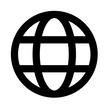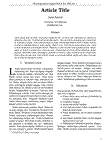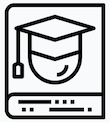Resultados de búsqueda - (((carl OR carlo) OR case) OR ((carga OR calla) OR cargota)) (litter OR (latter OR water ))*
Materias dentro de su búsqueda.
Materias dentro de su búsqueda.
- shelf-life 2
- vida de anaquel 2
- AHPND 1
- Administrative Burden 1
- Agency Theory 1
- Análisis de Ciclo de Vida (LCA) 1
- Artículo 1
- BFT 1
- Bioactive compounds 1
- Burger; culture; religion; African Americans; consumption 1
- Carga Administrativa 1
- Compuestos bioactivos 1
- Conflict resolution 1
- Derechos humanos 1
- Desarrollo sostenible 1
- Diálogo 1
- E62 1
- E63 1
- Edible coatings 1
- Educación superior 1
- Educational Governance 1
- Educational Policy 1
- Empatía 1
- Estructura económica 1
- Feed management 1
- Global History – Peruvian merchants – global consumption – Chinese goods – smuggling 1
- Gobernanza Educativa 1
- H32 1
- Haciendas 1
- Hamburguesa; cultura; religión; afroamericanos; consumo 1
-
1
-
2
Approach methodology for the sustainable design of packaging through computational tools: Case study: Water bottles
Publicado 2019“…It was identified that the global carbon footprint of ABS is smaller (0.07 kg CO2e) than that of PET (0.096 kg CO2e) in the manufacture of water bottles. However, in water euritrification there is a negative ratio of 0.4 kg.…”
Enlace del recurso
Artículo -
3
-
4
-
5
A Theoretical Study of the Hydration of Methane, from the Aqueous Solution to the sI Hydrate-Liquid Water-Gas Coexistence
Publicado 2016“…Monte Carlo and molecular dynamics simulations were done with three recent water models TIP4P/2005 (Transferable Intermolecular Potential with 4 Points/2005), TIP4P/Ice (Transferable Intermolecular Potential with 4 Points/ Ice) and TIP4Q (Transferable Intermolecular Potential with 4 charges) combined with two models for methane: an all-atom one OPLS-AA (Optimal Parametrization for the Liquid State) and a united-atom one (UA); a correction for the C–O interaction was applied to the latter and used in a third set of simulations. …”
Enlace del recurso
Artículo -
6
-
7
-
8
-
9
"Floc" Story
Publicado 2015“…The "floc" as called it 40 years ago also named "particulate" biomass came from the design of sludge from that purify the water on the one hand and consideration on the power mode of the other bivalves. …”
Enlace del recurso
Artículo -
10
-
11
-
12
Políticas recaudatorias enmascaradas como estímulos para combatir la informalidad
Publicado 2024Enlace del recurso
Artículo -
13
-
14
Factores que explican el valor del suelo. Caso Hermosillo, Sonora, México
Publicado 2018Enlace del recurso
Artículo -
15
Mina y mentira: el caso de Magdalena Teitipac, Tlacolula de Matamoros, Oaxaca.
Publicado 2017Enlace del recurso
Artículo -
16
-
17
-
18
New Technologies in Extrusion Process for Shrimp Feed
Publicado 2011“…This is why the feed must also generate lower levels of waste.It is well known that the extrusion process compared with the pelleting process, produce better nutritional quality feed, but in the particular case of shrimp, where a feed of high density and stable in the water is required, the extrusion by itself is not able to achieve these levels of desired density.The main characteristics of the shrimp feed are:- Water Stability, Digestibility, Quick sinking, Smaller size of the pellet, Reduces pollution in the water, - Lowering costs in the feed and OtherAlthough the extrusion process requires a highest investment and also the operational costs are higher than the pelleting process, if the extrusion process has the appropriate technology for densification, it would be much cheaper with a much greater profit than the pelleting process and most importantly, with a better quality feed as a result.In this work we show the latest technological advances in this direction to achieve a feed for shrimp in high quality and low cost through the extrusion process.…”
Enlace del recurso
Artículo -
19
Solving a green logistics bi-level bi-objective problem.
Publicado 2017“…After that, the multi-commodity bi-level case is studied and the respective adaptation of the tabu search is made. …”
Enlace del recurso
Tesis -
20
Solving a green logistics bi-level bi-objective problem.
Publicado 2017“…After that, the multi-commodity bi-level case is studied and the respective adaptation of the tabu search is made. …”
Enlace del recurso
Tesis


